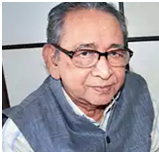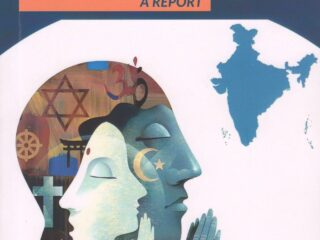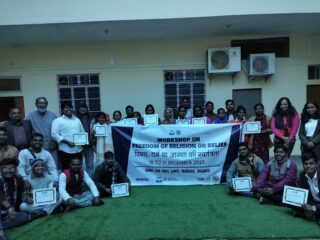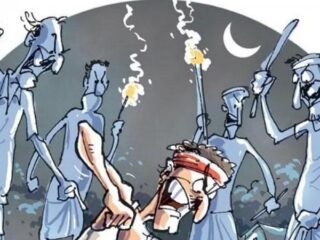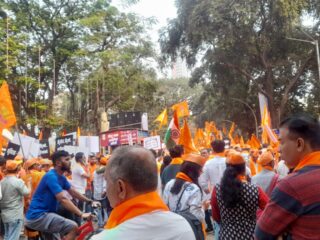Irfan Engineer
On Tuesday, 28th June 2022 Mohammad Riyaz Attari and Gaus Mohammad brutally killed Kanhaiya Lal Teli, a 40-year-old tailor for his alleged social media posts in support of former BJP national spokesperson Nupur Sharma’s recent statement considered derogatory to Prophet Mohammad.[1] The two assailants then made a video displaying the cleaver with which they had hacked Kanhaiya Lal, accepting their crime and even allegedly threatening Prime Minister Narendra Modi. The inhuman and gut-wrenching act of killing Kanhaiya Lal should be condemned in the strongest words possible, particularly because of the manner in which the act was executed. The assailants are unrepentant and even proud of their actions. The leaders of all major political parties in India condemned the brutal killing of the tailor. All prominent and influential religious as well as political leaders of the Muslim community also condemned the killing. That includes Assaduddin Owaisi of the AIMM, Maulana Badruddin Ajmal of AIUDF, and Jamiat Ulama-i-Hind – an organisation of Muslim clerics. The Muslim leaders condemned the act not only because it constituted an offence under Indian criminal laws, but also because the act is against the Sharia and Islam. The Rajasthan Police promptly arrested the culprits from Rajsamand.
The assailants appear unrepentant in the video, which they have made viral. They must have executed the brutal act as a “punishment” for what, according to them, constitutes a grave crime. They seem to be willing to face the full might of law for their act. They appear to be ready to embrace even the harshest punishment, even the death sentence. It is not clear what motivated them.
Even before the investigation reaches any conclusion, the windmills are active and give spin, based on their preconceived notions as to what motivated the assassins. Those prone to Hindu nationalist ideology believe any fatal attack on Hindus by Muslims is rooted in their religious beliefs, Islam being an intolerant and violent religion. On the other hand, if a Hindu mob kills Muslims, it is either a spontaneous and justified reaction to a gravely provocative act by Muslims, warranting such a reaction. On the other hand, if a Hindu mob attacks a Muslim without any apparent provocation, it must be, they believe, that the attacker is mentally deranged or a fringe element at worst. According to the Hindu nationalist discourse, therefore, attacks by Muslims are necessarily rooted in their religious beliefs and intolerance, they are terrorist attacks, and the investigators should look for links with terrorist outfits in Pakistan, Afghanistan or other Muslim majority countries. There simply cannot be any other motivation, e.g. their religious feelings being outraged or personal desire to seek revenge. On the other hand, the Hindu religion being tolerant and non-violent, it does not and cannot motivate any violence. Riots in Gujarat in 2002 were sought to be justified and even subtly legitimized on the basis of action-reaction doctrine. Whereas any call of genocidal proportion to kill Muslims is dismissed as a call by fringe elements and ignored.
Although in general perception, Muslims are more supposed to be religious fanatics, the possibility that anyone from them could be acting because their religious feelings are outraged is not given any consideration. The action-reaction theory is not supposed to be valid for Muslims attacking Hindus. It is supposed that there are no fringe elements in the community – the entire community is more or less made up of violent fanatic people having their loyalties to pan-Islamism, more particularly, Pakistan. The perception about Muslims has not emerged from thin air nor from studied observation. It has been carefully cultivated and deepened by the Hindu nationalists through clever use of violence targeting them during riots, creation of fear of the community in the minds of common people and popularising discourse stigmatizing them as deviants, responsible for the wrongs of history, including partition, less than human, to be feared. The popular demand then is that they should be suppressed, if necessary, with the use of violence, and shown their place.
The prevailing perception about Muslims skew the police investigations. The police take any attack by Muslims on Hindus extremely seriously and investigate it with overzealous enthusiasm. ‘Leaks’ or shall we call it planting information in the media begins. Pakistani links of the accused are hinted at. Any Pakistani contact number or visit to Pakistan by the accused for whatever reason becomes almost conclusive proof of the terrorist nature of the attack. The media holds a trial of the incident clutching on some interviews, scoops, sources of information, etc., however, often, their trial is based more on their editorial line and preconceived notions of the journalists viz. – intolerant and violent Islam and Muslims vs. tolerant Hinduism. All relatives, friends, business associates, colleagues, and casual acquaintances are subjected to scrutiny presuming to be co-conspirators. In the Udaipur incident too, these discourses and theories are coming into play. Whether the accused in the Udaipur incident have or do not have terror links should be concluded on the basis of a thorough and impartial investigation by the investigation agency. In most cases of mob lynching, the survivors of the violence are slapped with offences and their guilt is discussed in the media ad nauseum, which gives credence to the action-reaction doctrine. However, in the Udaipur incident, there is near absence of any wrongdoing on the part of the victim[2]. The accused of mob lynching cases are not subjected to the same standards of scrutiny although the brutality of the action may be no less.
More than 12,000 persons have been killed in communal riots in post-partition India and more than 40,000 persons have been injured, the overwhelming majority of the affected being Muslims. Some of the victims of communal riots were killed even more brutally. Centre for Study of Society and Secularism has been documenting the incidences of major communal violence every year since its inception in 1993, and the founder of CSSS, Dr. Asghar Ali Engineer has been doing so since the first major post-partition communal riot in India in 1961 in Jabalpur. More than 80 persons have been killed in mob lynching, almost all victims are from Muslim, Christian, Dalit and Adivasi communities. On December 6, 2017, Shambhulal Raigar hacked Mohammed Afrazul, a migrant labour from West Bengal to death in Rajsamand with equal stealth. He summoned the labourer on the pretext of giving him work and then hacked him and burnt him. He asked his teenage nephew to film the act and made the video viral. Although he claimed in the video that he was killing Afrazul for ‘love jihad’, it was Raigar, a married man who desired illicit relation with another woman. They targeted a vulnerable labourer on false accusation. His video showed that he had internalized the propaganda of Hindu nationalists which motivated him to scapegoat a labourer. Unlike the Muslim community which swiftly and unconditionally condemned the two assailants, Raigar was made a hero by Hindu nationalists. In the next Ram Navmi procession, his tableaux was on display, almost deifying him. Members of the community contributed Rs. 3 lakhs in his wife’s account for his legal defence (Mumbai Mirror, 2017).
The Assailants
The assailants seem to have chosen a convenient soft target in a tailor and attacked him in stealth, pretending to be his customers. Such an attack doesn’t require any bravery, it merely requires stealth. They did not go to protect any victims of mob lynching or communally targeted violence. They did not even speak about such attacks. They did not seek justice in any forum for the survivors of communally targeted violence. They did not condemn or confront Nupur Sharma for her derogatory remarks against the Prophet of their faith. They chose a vulnerable and weak target nearer home and attacked an unarmed and without warning individual with the brutality in stealth. More courageous thing would have been to have a steel-like determination to pursue justice for what they thought was wrong doing on part of their target just as Teesta Setalvad did for the victims of communal violence in Gujarat in 2002. Just as Centre for Social Justice did in the Bilkis Bano rape case – giving evidence in court of law standing up to all the unfathomable and unimaginable pressures and death threats from the most powerful, influential and well-connected sections. Bilkis Bano had to live incognito in hiding till the trial was over and Teesta Setalvad had to seek protection by armed guard by petitioning to the Supreme Court. The two assassins of the tailor may be ready to face the punishment meted out to them by the law, they won’t be there to stand up and support the innocent from the Muslim community that may be targeted by the might of the Hindu nationalists, including social and economic boycott, and subject to other hardships as a consequence of their actions. The entire community has rightly condemned the assassin’s action targeting the tailor.
What can we do?
Although the Udaipur and the Amravati incident of targeted killing must be unconditionally condemned, condemnation alone is not likely to stem such violence in future. The eco-system that breeds such violence must be neutralised. There is a dramatic increase in hate speeches. Hate speeches are no more made by fringe elements. The impunity enjoyed, particularly by the Hindu nationalists is encouraging more followers to openly air their prejudicial views and hate mongering targeting the minorities – both Muslims and Christians. More and more highly placed government officials, including ministers and ruling party officials are airing their hatred in an unrestrained manner leading to intense polarisation. Hate speeches arouse passions, which in turn encourages violence and counter violence. It is tearing the fabric of society. Punishing the assailants in the Udaipur and Amravati incidents is not sufficient to stem this cycle of violence. It is surprising that the PM has maintained silence and not publicly reprimanded hate speeches emanating from the ruling party’s camp. The law-and-order machinery too slackens its action against the hate mongers.
Community leaders of all religious communities should step in and disown the hate mongers within their own communities and reiterate ethical teachings of their religions and create a conducive atmosphere. We all know the proverb – eye for an eye will make the whole world blind.
—
References:
Mumbai Mirror. (2017, December 16). Social media floods with support and donations for Afrazul killer Shambhu Raigar. Retrieved July 3, 2022, from Mumbai Mirror: https://mumbaimirror.indiatimes.com/news/india/social-media-floods-with-support-and-donations-for-afrazul-killer-shambhu-raigar/articleshow/62097703.cms
[1] A Hindu pharmacist was also similarly killed in Amravati in Maharashtra by Muslim assailants. However, the media has focused more on the Udaipur incident. Therefore, in this article we refer to the Udaipur incident although both the incidents are brutal and most condemnable.
[2] The Supreme Court of India made damning observations on Nupur Sharma’s petition to club all the FIRs filed in different states. The SCI observed that Nupur Sharma’s outpouring on national television was endangering national security.


